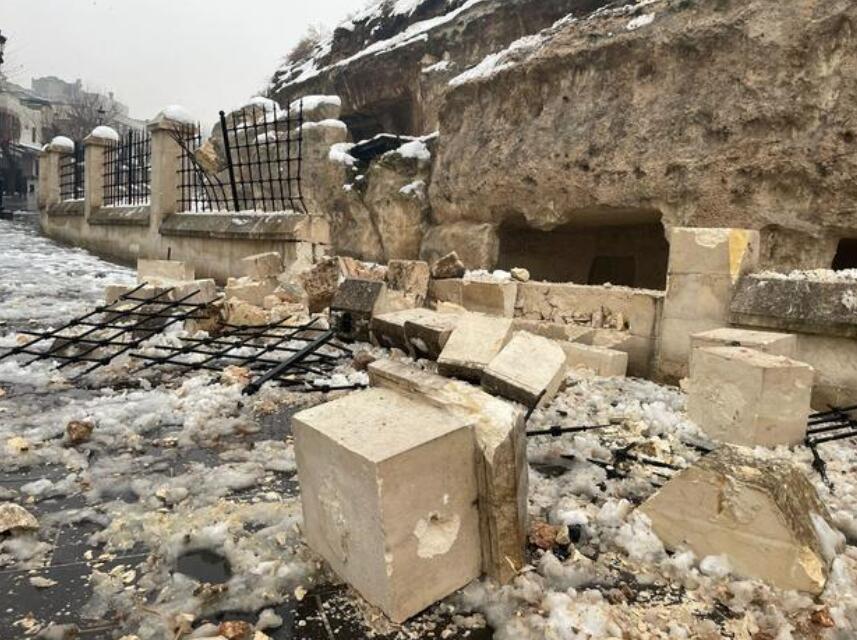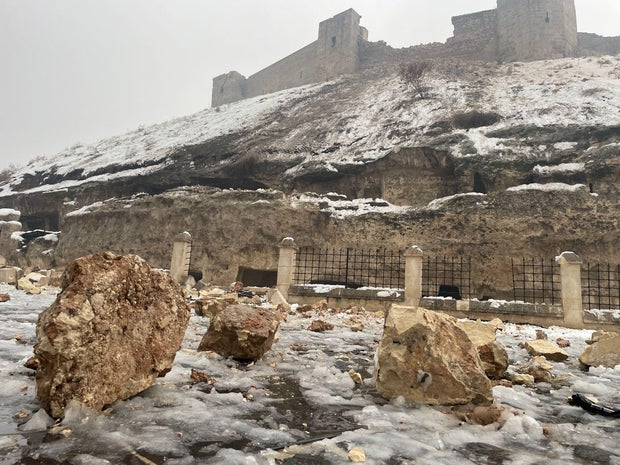An ancient castle in Turkey was one of the historic monuments damaged when major earthquakes hit the country and neighboring Syria, killing more than 2,000 people on Monday. Images show parts of the Gaziantep Castle, which was first built in the 2nd and 3rd centuries AD, during the Roman Empire, crumbling after the earthquake.
The 2,000-year-old castle is located in the Gaziantep region, about 80 miles south of the epicenter of one of the quakes in Kahramanmaras Province, according to the Reuters news agency.
The first earthquake was a huge 7.8-magnitude temblor that caused devastation across a wide region spanning southeast Turkey and northern Syria. Its quake and its aftershocks were felt as far away as Cairo, Cyprus, Lebanon, and even in Greenland and Denmark.
The second earthquake, which registered 7.6 on the Richter scale according to Turkey’s Disaster and Emergency Management Authority (AFAD), struck the same region shortly after. The epicenter of the second earthquake was the Elbistan region of Kahramanmaras Province, Reuters said.
The castle, an archeological site, sits near the Gaziantep Archeology Museum, which includes works of the Late Hittite and Roman Periods during which the castle was built.
While there is no definitive information about when the castle was fist built, it was founded on top of an earthen mound that dates back some 6,000 years, to when an ancient city called Theban occupied the space.
It is believed to have been constructed as a watchtower during the Roman period between, the 2nd and 4th centuries AD. However, it was built up even more during the 5th century AD during the reign of Byzantine Emperor Justinianus, who was known as the “Architect of Castles.”
The Ottomans repaired the castle over time, but it got a second full overhaul by Egyptian Sultan Qaitbay in 1481. There are 12 towers on the castle and the two towers near the main gate were rebuilt in 1557 by Suleiman the Magnificent during the Ottoman Empire.
Videos and photos of the castle after the earthquake show large chunks of the rock facade having fallen off and an iron fence broken and bent by fallen rock. CBS News has reached out to a representative for the historical site for more information and is awaiting response.
“I have never felt anything like it in the 40 years I’ve lived,” one resident in Gaziantep told BBC News about the earthquake. “We were shaken at least three times very strongly, like a baby in a crib.”
The castle was one of thousands of buildings damaged by the quakes. Some 2,824 buildings were destroyed, according to Turkey’s disaster and emergencies management agency (AFAD), Reuters said.


